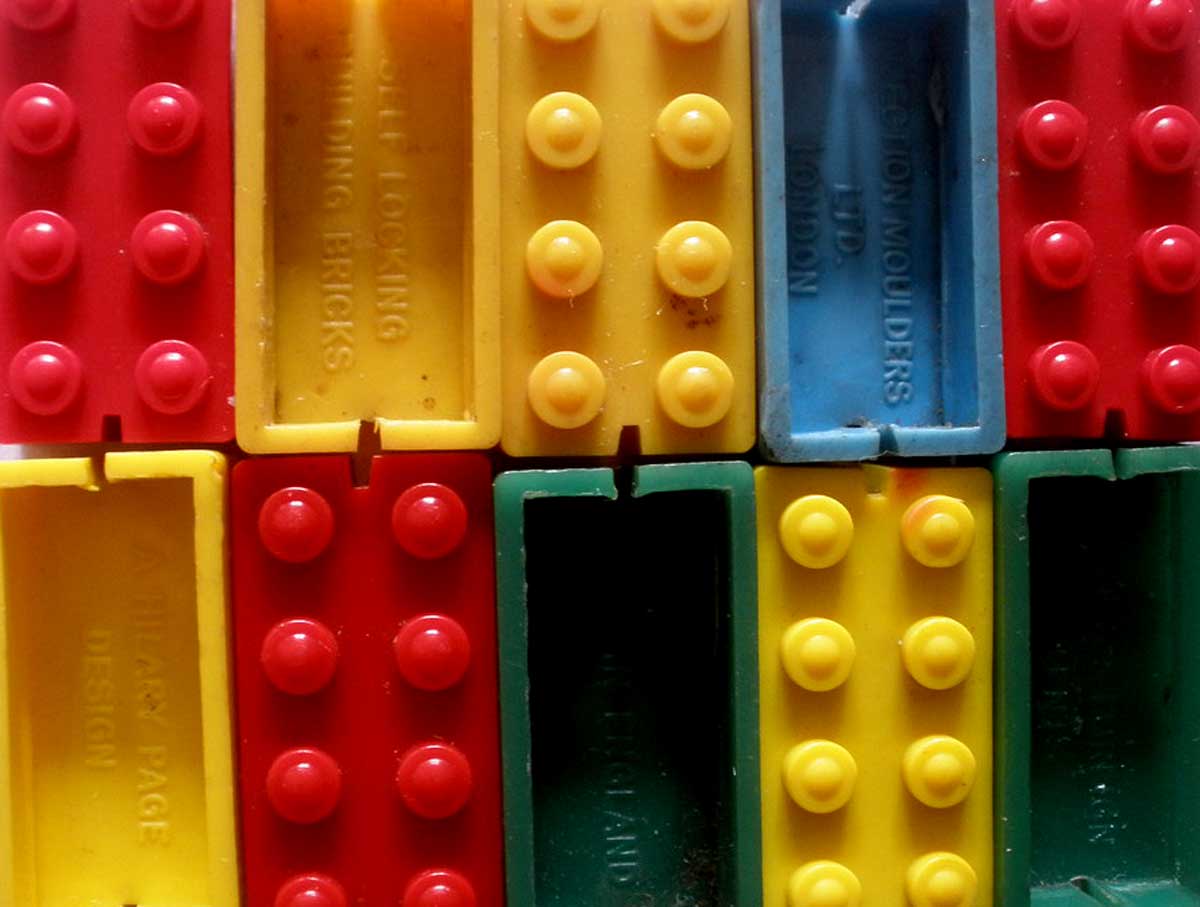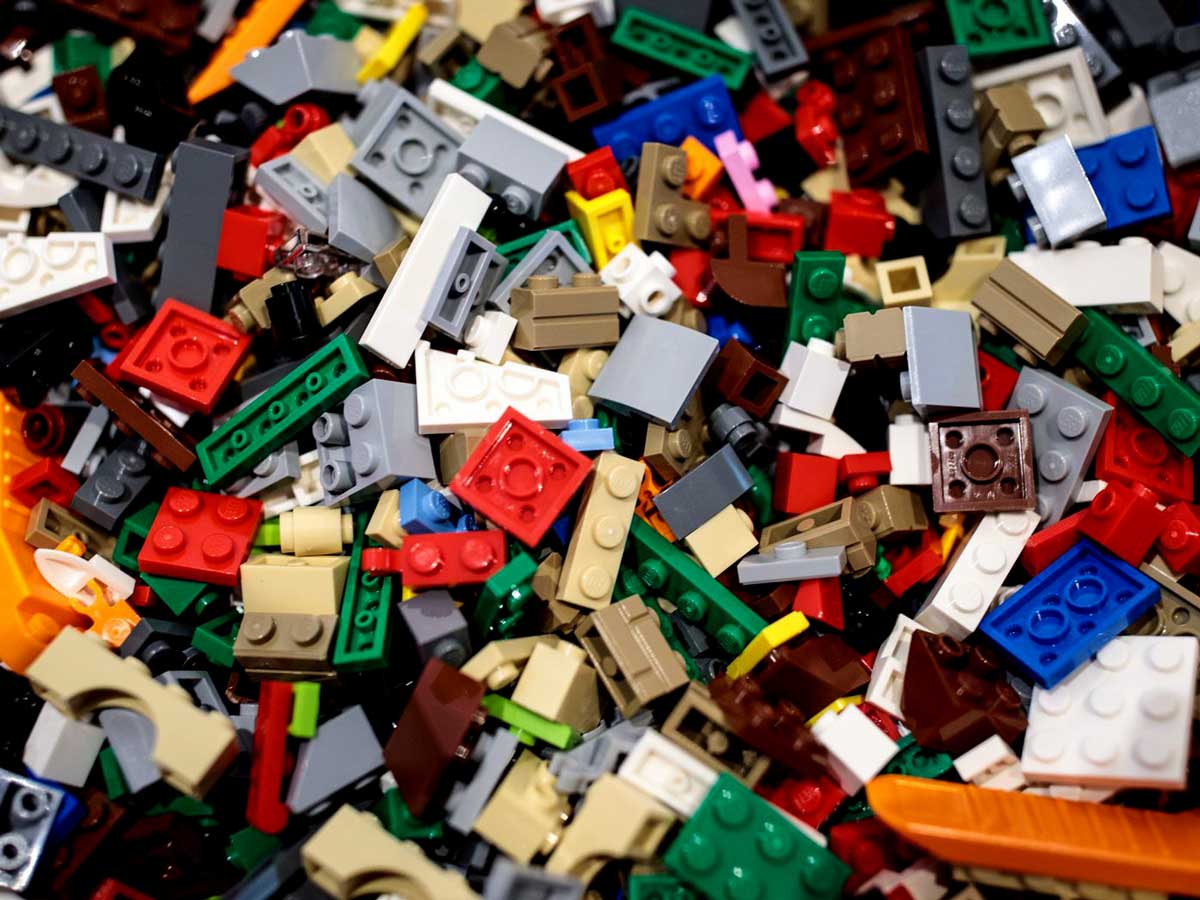
Starting out as simple, interlocking construction bricks, Lego toys have been with us for seven decades. Through these bricks, the construction of anything is possible, challenging the imaginations of children and adults alike. Throughout the decades, Lego has released many more block designs and special parts to help bring these imaginations to life. With little mini figurines included, people can build whatever they want, whether creating something new or following the instructions on one of Lego’s many sets, from castles, pirate ships, and cityscapes, to scenes from Star Wars, Harry Potter, or Spider-Man.
This is the history of how Lego became a toy so beloved throughout the entire world.
The History of Lego: The Beginning

The history of Lego started In 1932 with Ole Kirk Christiansen, a carpenter from Billund, Denmark, who began making wooden toys. The business was not very profitable, and Christiansen often had to trade his toys for food. His son Godtfred began working for him during this time, and the two struggled through the early 30s. In 1934, he named his company “Lego,” derived from the Danish leg godt, which in English means “play well.” However, it wasn’t until after World War II that the Lego brick would take shape.
In 1947, Christiansen purchased a plastic injection molding machine. In the same year, he acquired plastic bricks made by a British company called Kiddicraft. The “Kiddicraft Self-Locking Bricks” had been patented in 1939. Nevertheless, the Lego Group began producing their own version, which they named “Automatic Binding Bricks.” In 1953, they were renamed “Lego Bricks.”
Get the latest articles delivered to your inbox
Sign up to our Free Weekly Newsletter

Plastic was a relatively new addition to the world of toys, and Lego struggled to build a profitable customer base, as people tended to prefer wood or metal. Godtfred Christiansen, however, persevered with the idea of using plastic.
In 1954, Godtfred Christiansen decided to incorporate Lego Bricks into a system of toys whereby the Bricks would be part of a line of interrelated products designed to be used together. In 1955, the “Town Plan” was the first such system produced by the Lego Group. The set consisted of a piece of plastic cloth on which was printed a stylized design of streets over which Lego buildings could be constructed and placed. Vintage sets like these are worth a lot of money today.
The bricks, however, were far from perfect and had to undergo adjustments to their design to make them better at interlocking and being able to be pulled apart.
In 1958, Ole Kirk Christiansen died, and his son inherited the leadership of the company. The history of Lego entered a new era.
Lego in the 1960s

Throughout the 60s, the history of Lego was one of rapid expansion in terms of business and the toys that were being produced. Sales expanded to the United States and Lego began being produced under license by luggage manufacturer Samsonite.
There was also a much greater focus on adding a dynamic factor to Lego bricks by introducing various more nuanced pieces for specific construction ideas. Perhaps the most important of these was the introduction of the Lego wheel, which changed the history of Lego by opening up huge new areas for potential product design.
In 1963, Godtfred Kirk Christiansen laid out the ten characteristics the toy should always adhere to:
- Unlimited play possibilities
- For girls, for boys
- Enthusiasm for all ages
- Play all year round
- Stimulating and harmonious play
- Endless hours of play
- Imagination, creativity, development
- More LEGO, multiplied play value
- Always topical
- Safety and quality
Adhering to the 10th characteristic, in 1964, the cellulose acetate from which the bricks were made was replaced with acrylonitrile butadiene styrene (ABS plastic), which is still in use today.
In 1966, the Lego train system was introduced, and in 1968, the history of Lego would include a popular new phenomenon. The first Lego theme park was opened. The Legoland theme park in Billund would prove to be a major success. Originally three acres, the park would grow to over 24 acres over the next two decades. The park stimulated business on a massive (or miniature) scale, and in 1968, more than 18 million units were sold.
1969 saw the introduction of Duplo, which are much larger bricks designed for young children. One important characteristic of Duplo is that it can be used interchangeably with standard Lego bricks.
Lego in the 1970s & 1980s

The history of Lego throughout the latter decades of the 20th century was one of continuous expansion. Godtfred Christiansen’s son, Kjeld Kirk Kristiansen, joined the managerial staff and opened new manufacturing facilities and a research and development facility to ensure the company kept up with modern manufacturing methods.
In 1974, the first Lego human figures appeared. By 1978, they had evolved into the Lego Minifigure design that is still in use today.
In 1975, the company introduced more advanced building sets geared toward an older audience. These sets would evolve into Lego Technic and include small parts like axles, gears, levers, and universal joints.
The company also tried to attract a bigger market of girls by introducing the Scala series, which featured jewelry elements.
The history of Lego took a giant leap forward with the introduction of dedicated themes, which were seen as systems within systems. These were Lego Space, Lego Castle, Lego Town (later renamed Lego City), and Lego FabuLand, the latter being aimed at younger children.
In 1988, the company introduced Lego Pirates and began adding different faces to the Minifigures. Before, they had just been standard smiley faces. Now, they had a whole range of emotions and facial features like beards and eye patches.
Lego also increased production, setting up facilities in South Korea, Malaysia, Brazil, and many other places.
Lego Goes Into Decline

Throughout the 1990s and into the next century, Lego suffered a decline in profits. This was partly due to a change in design philosophy. Many of the original designers were laid off, and young “innovators” who knew little about toy design were hired. This proved a mistake for the company, as it went into sharp decline. In 1998, the company had to lay off 1,000 employees.
In 1999, Lego started producing licensed intellectual property. Star Wars and Harry Potter sets became available in Lego, while Winnie the Pooh sets were created for Duplo. The licensing costs resulted in more expensive sets, which turned fans away.
The history of Lego for the next five years was characterized by struggle and damage control. In 2004, the company almost went bankrupt. Kjeld Kirk Kristiansen stepped down as CEO and handed the position to Jørgen Vig Knudstorp, the first non-family CEO. The new boss immediately set about enacting recovery plans to save the ailing company.
The Recent History of Lego

Under Jørgen Vig Knudstorp, the company began to recover. It was mainly the Star Wars franchise that spurred sales. Despite the recession, Lego became profitable again, mainly because of licensed products. A major boost to the company was also breaking into video games and television series. The release of new themes also helped Lego recover, including Lego Vikings and Lego Architecture.
In 2011, Lego released its Ninjago theme, which was accompanied by video games and a television series. The Ninjago theme is set in a fantasy world with ninjas and has become one of Lego’s most popular flagship themes.
Despite the successes, a major hurdle loomed in terms of public opinion. Lego had worked with Royal Dutch Shell earlier on in its history and resumed its partnership with the oil giant in 2011. This move brought a huge amount of protest as society became more ecologically conscious. After a successful campaign by Greenpeace, Lego relented and decided not to renew its contract with Shell. The Lego company, however, moved beyond this PR nightmare and continued its upward trajectory.
In 2014, the Lego Group and Warner Brothers released The Lego Movie, which received wide acclaim and almost unanimously positive reviews.

2017 saw a reduction in revenue and the loss of jobs, but the company bounced back quickly. The Lego Batman Movie was released as well as the Lego Ninjago Movie.
In terms of expansion, the years of recovery saw Lego expand its production with factories in Mexico, China, and Hungary.
In 2019, the sequel to The Lego Movie was released, The Lego Movie 2: The Second Part.
The future of Lego looks bright. The recent pandemic actually had a positive effect on Lego sales as it forced people to stay at home. In 2022, The company reported a 27% sales rise in its latest financial year, and in 2023, the company plans to open manufacturing facilities in Vietnam.
Today, Lego employs over 24,000 staff and has almost 900 Lego-branded shops worldwide, with a hugely increasing market in China.

The success in the history of Lego is the focus of it not being a single toy but an entire system with each set using pieces that can be interchanged with other sets. It is a construction system that also allows people to build incredible things from their imaginations.
Part of the joy of owning Lego is adding pieces to your collection to build more things. It is because of this effect on Lego collectors that Lego has become one of the most successful and famous toys in history.







